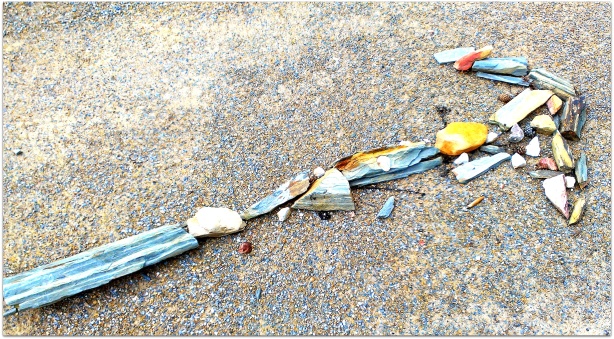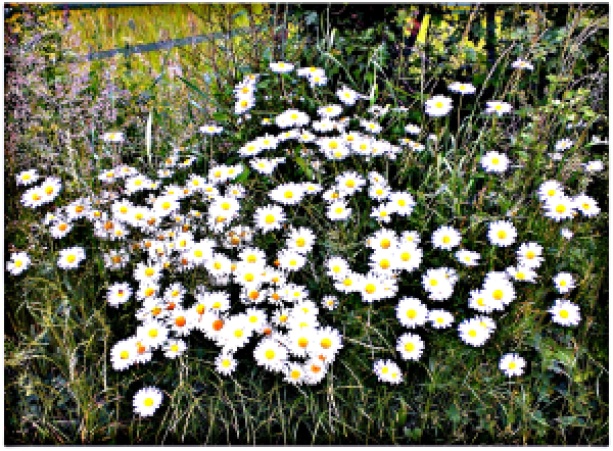 I met Dan McCarthy when I was walking the Camino Francais from the Spanish border with Spain to Santiago De Compostela in October 2012. Dan was back in 2013 and guested the Spring Camino blogs here in 2013. He has just returned from his most recent walk this time on the Camino Portugese walking from Lisbon north through Portugal to eventually cross the border with Spain and walk into Galicia to Santiago. Dan’s yearly commitment astounds and humbles me, not least because he will be 80 this year. He has given me kind persmission to publish his reflections on the differences of these two caminos. Dan offers “A Camino is in a way a life time in miniature. It does not lend itself to facile analysis. But here is my effort.”
I met Dan McCarthy when I was walking the Camino Francais from the Spanish border with Spain to Santiago De Compostela in October 2012. Dan was back in 2013 and guested the Spring Camino blogs here in 2013. He has just returned from his most recent walk this time on the Camino Portugese walking from Lisbon north through Portugal to eventually cross the border with Spain and walk into Galicia to Santiago. Dan’s yearly commitment astounds and humbles me, not least because he will be 80 this year. He has given me kind persmission to publish his reflections on the differences of these two caminos. Dan offers “A Camino is in a way a life time in miniature. It does not lend itself to facile analysis. But here is my effort.”
IN MY BEGINNING IS MY END
“In my beginning is my end” says TS Eliot in East Coker, one of his Four Quartets. I happened to be reading East Coker for a discussion group in which I participate and have found several passages which seem to help me to articulate my thoughts about this Camino. I hope TS will forgive me if I totally distort the meaning of his great poetry in bending it to make some sense of my experience.
A first impression of a major difference in the two Caminos, the Camino Francais which I have walked eight times, and the Camino Portuguese is the difference in their beginnings. And I believe that difference colored the whole experience for me.
CAMINO FRANCAIS
The first day or two of the Camino Francais is a 15 mile climb up the northern slope of the Pyrenees to the Monastery of Roncesvalles which commemorates the setting of the eighth century battle of the rearguard of Charlemagne’s army which is enshrined in the Song of Roland, an epic poem of the French language. The monastery has been a refuge for pilgrims for close to a thousand years. One of the high points of the stop for me is the Pilgrim Mass at 6PM when the celebrant announces the places around the world from which the pilgrims who arrived that day have come. After Mass The celebrant blesses pilgrims in their native language and then in a darkened Chapel we all sing in Gregorian Chant the Salve Regina.
For the next couple of days pilgrims negotiate a rather steep incline, struggling in places and stopping at a couple of lovely small towns, to arrive at the magnificent walled city of Pamplona. The pilgrim hostel in Pamplona is across the street from the Cathedral where on Sunday you can attend a Mass sung in Gregorian chant. Leaving Pamplona and arriving in Puente La Reina I stay at a monastery of the Padres Reparadores and attend Mass in the 12th Century church of Santiago.
Two characteristics summarize “my beginning” in the Camino Francais, the spectacular natural beauty of the climb up and down the mountains and the availability of a nourishing liturgical life. In fact I had not reflected on this latter blessing until I thought of the contrast with the Portuguese Camino. Another characteristic of the Camino Francais I should mention is the presence of other pilgrims along the way. In the early years of my walking usually just a scattered few up ahead or behind, now many more some times too many. For me all of this creates the aura of THE CAMINO that is palpable. I have said in the past I experience the Camino as a country 10 yards wide and 500 miles long winding country across northern Spain. It becomes my land, a place where I feel at home. Much of the Camino Francais is not actually so rich in Liturgical experiences. Churches are often not open and the surroundings are not always so uplifting. But that beginning sense of being at home endures. And the company of other pilgrims who seem to share that same sense of belonging is constant.
CAMINO PORTUGUESE
I am now entering risky territory, a comparison about which I have some strong feelings. Comparisons are odious. If you are thinking of doing the Camino Portuguese please consult other impressions to form a more objective opinion.
I began walking the Camino Portuguese not from the Cathedral in Lisbon the traditional starting place, but at Moscavide, a suburb of Lisbon about 6 miles into the first stage beyond the beginning at the Cathedral. I took this short cut because I was already getting close to my limit of days to walk. I had taken three days off to visit the Azores and going into Lisbon from the Airport would have cost me another day while Moscavide was five minutes from the airport and had a Youth Hostel on the Camino, although it had no official relationship to the Camino. Also starting 6 miles into the Camino reduced the first day’s walk from 19 miles to 13 miles of city streets through some industrial areas, some picturesque walks along the river Tagus. I stayed that night in a pensao, a B&B with no particular connection to the Camino. I had not seen any pilgrims that day and was the only guest in the B&B. Most of the walk during the first week or so was on city streets or highways
I continued this routine for the next four or five days. No other pilgrims, no signs of any religious institutions, not churches, not monasteries, not albergues and not another pilgrim. The route was flat but long; 18,19 mile days long, staying in pensaos usually the only guest. While there were way marks they only marked where the route turned. I am used to marks frequently along the way and when they disappear I am aware I missed one. The more sparse marking requires much greater vigilance and consequently I got lost several times, once adding about 5 miles to a 19 mile day. Feeling lost began to be the predominant emotion of the walk a vivid contrast with the sense of being at home on the Camino Francais. Once in a wooded area the way marks disappeared entirely because the trees that had been marked had been cut down for some construction. Some workers got me back on the way.
This beginning as you can see turned into an uncomfortable anxious experience. A friend with a Buddhist background reminded me that desire causes suffering. So I began to reflect on what was the desire that was causing this anxiety. At the most superficial level I realized it was my concern about finding a place for the night. When you’ve been walking for six or seven hours with no end in sight incipient panic rises. But in my effort to get these desires under control it dawned on me what a powerful form of ascetism it is to give up your place of rest. It was what Jesus did: But Jesus replied, “Foxes have dens to live in, and birds have nests, but the Son of Man has no place even to lay his head.” Matthew 8:20. The holy men of India are said to sleep by the side of the road. I struggled with the sense of being lost, of not being at home on this. Camino for the rest of my walk. “In my beginning…”. I never felt at home as I do on the Camino Francais. I do wonder if this anxiety had something to do with my physical problems at the end.
What to do with this feeling of not being at home? It occurs to me that in a couple of weeks I will complete 80 yrs of age. It’s harder and harder to ignore that I am in the land of seniorhood. And some of this land feels a bit strange. My body is of course weakening and memory is a bit vague at times. My eyesight is not as sharp as it used to be. And hearing is slightly impaired. Was the Portuguese Camino a vivid introduction to THIS new land? Here are some of T.S. Eliot’s thoughts about the land of seniorhood from East Coker:
Old men ought to be explorers
Here and there does not matter
We must be still and still moving
Into another intensity
For a further union, a deeper communion
Through the dark cold and empty desolation,
The wave cry, the wind cry, the vast waters
Of the petrel and the porpoise. In my end is my beginning
And
In order to arrive there,
To arrive where you are, to get from where you are not,
You must go by a way wherein there is no ecstasy.
In order to arrive at what you do not know
You must go by a way which is the way of ignorance.
In order to possess what you do not possess
You must go by the way of dispossession.
In order to arrive at what you are not
You must go through the way in which you are not.
And what you do not know is the only thing you know
And what you own is what you do not own
And where you are is where you are not.
And
Do not let me hear
Of the wisdom of old men, but rather of their folly,
Their fear of fear and frenzy, their fear of possession,
Of belonging to another, or to others, or to God.
The only wisdom we can hope to acquire
Is the wisdom of humility: humility is endless
 ULTREYA and BUEN CAMINO TO ALL
ULTREYA and BUEN CAMINO TO ALL





